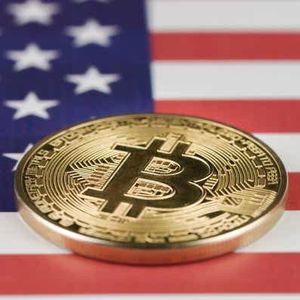Summary MSTR's Bitcoin strategy under Michael Saylor's leadership has driven significant outperformance, creating momentum for institutional BTC adoption, supported by recent Q3 earnings and a robust "42 Strategy.". Game theory illustrates how institutional and national adoption of BTC could unfold, with MSTR's success pressuring other companies to consider BTC investments. Trump's pro-BTC stance and Republican majority are expected to drive favorable BTC policies, potentially including a national BTC reserve, influencing global BTC adoption. We reiterate our BUY ratings on BTC and MSTR, anticipating accelerated institutional adoption and higher BTC prices driven by FOMO dynamics and supportive U.S. policies. Introduction On October 21st, we initiated coverage on MicroStrategy ( MSTR ) with a BUY rating. In that article, we emphasized Michael Saylor's strong convictions and long-term vision characterized by MSTR’s Bitcoin (BTC-USD) strategy. In this article, we also mentioned key risks and potential growth drivers for the stock. On September 11 th we also initiated on BTC with a BUY rating, highlighting that brighter days could be on the horizon. For our readers who haven't checked our initiations yet, we encourage you to check them out. Since our initiations, MSTR has outperformed S&P 500 ( SP500 ) by 21.6%. Seeking Alpha On its side, BTC has outperformed the index by 23.06%. Seeking Alpha In this article, we’ll discuss MSTR and BTC potential with a focus on the accelerating momentum behind these two assets, especially following Trump’s victory in the U.S. election. First, we’ll dive into MSTR’s recent earnings. Then, we’ll explore the concept of "game theory" to illustrate how mass adoption could unfold, initially among institutions and potentially among nations. We'll begin by examining how MSTR, under Michael Saylor’s leadership, is challenging many investors and corporations, creating momentum that could spark a wave of institutional BTC adoption. Finally, we’ll discuss Trump and the Republican stance on BTC and explore how this could impact BTC adoption at an international level. MSTR Q3 Earnings - Michael Saylor's 42 Strategy During Q3 , MSTR acquired an additional 25,889 BTC for $1.6 billion at an average price of $60 839. As we write, this represents already a 25% unrealized profit on that portion. Consistent with its strategy, the firm raised $1.1 billion in equity and $1 billion through convertible notes due in 2028. It also repaid $500 million in senior notes maturing in 2028. The group now holds $18 billion in BTC and shows no signs of slowing down as it announced its “42 Strategy”, a plan to acquire $42 billion of BTC by 2025 through $21 billion in equity and $21 billion in debt. Here’s the breakdown and timeline of this strategy: Company Presentation In our initiation, we highlighted two key metrics that deserved close attention: BTC count relative to the increase in share count. This ratio is essential, as it shows whether shareholders are gaining more BTC per share, despite share dilution. Since the beginning of the year, even with a +13.2% increase in share count, shareholders have seen their BTC holdings per share rise by 33.3%. Adjusted for dilution, this results in what is called a “BTC Yield” of 17.8%, which we find particularly impressive. Company Presentation During the earnings call, management also set BTC yield targets for 2025-2027, aiming for a range of 6-10%, which is lower than the historical BTC yield. This indicates in our view a rather cautious approach. A lower BTC yield could reflect a shift from aggressive BTC acquisition to a more stable pace. It could also suggest more dilution than previously seen. We consider that even a lower BTC yield benefits to shareholders as long as it remains above the share dilution rate. Management also highlighted the strong performance of the firm since adopting the BTC strategy in which very few believed. MSTR success has proven critics wrong. Company Presentation Since implementing this strategy, MSTR has been outperforming every company in the S&P 500. In that sense, there’s good reason for Michael Saylor to be proud. This success is creating a seism in the financial world and beyond. More and more important players are starting to consider the possibility of integrating BTC into their own strategies. Why this sudden shift in behavior? Why are executives and even politicians who were once hostile to BTC now beginning to shift their positions and question their previous views? To understand this major change, we wanted to dive with you into the concept of “game theory”. Understanding Game Theory Game Theory is a framework for understanding the relationships between players, aiming to explain their decisions and choices based on their interactions and circumstances. Developed by mathematician John von Neumann and economist Oskar Morgenstern in the 1940s, this concept studies optimal decision-making, trying to anticipate the possible choices an actor might make and ultimately identifying the best decision they can take. Let’s illustrate this with a simple example. The Prisoner’s Dilemma Mario and Toad have been captured by Bowser, accused of trying to rescue Princess Peach from Bowser’s Castle! They’re now being interrogated separately. Author Here are the 4 possible outcomes: Both plead not guilty - They each receive a 3-year sentence. Mario pleads guilty while Toad pleads not guilty - Mario receives the minimum sentence, while Toad receives the maximum. Both plead guilty - They both get a 5-year sentence. Toad pleads guilty while Mario pleads not guilty - Toad receives the minimum sentence, while Mario receives the maximum. Here pleading guilty is the best option if the other pleads not guilty. However, if both plead guilty, they’ll still face a significant sentence, though it will be less severe than if one pleads guilty while the other doesn't. This simple example highlights the importance of understanding the other’s actions to make the best possible decision in any given situation. Bitcoin and Corporations Adoption We believe that the game theory applies particularly well to what is currently happening to the institutional sphere while BTC perspectives are shifting. Since the beginning of MSTR's BTC strategy, an increasing number of companies have started to consider BTC as a potential way to diversify their treasury. As of today, 29 listed companies hold BTC, representing 1.73% of the total BTC supply. Coingecko, Author Since MSTR’s initial adoption in 2020, several other companies have taken this step toward BTC. Here, we only mention those that currently hold crypto. Some, like Reddit ( RDDT ) included BTC in their treasury but decided recently to sell them. There is no doubt that MSTR holds the majority of BTC held by institutions. We also acknowledge that many companies holding BTC are operating in the BTC mining industry, but adoption is growing. In the past, BTC wasn’t even considered, it was either ignored or mocked. Today, we are convinced that this perception is changing. MicroStrategy vs Microsoft - Bitcoin Dilemma In December 2024, Microsoft shareholders will vote on whether the company should explore investing a portion of its cash reserves in BTC, a proposal made by the National Center for Public Policy Research ((NCPPR)). You can find below NCCPPR's statement: CoinTelegraph It’s worth noting that MSFT’s board is advising shareholders to vote against this proposal. We believe it is unlikely that this proposal will be adopted, at least, not yet. Here again, we consider this case as a perfect example of game theory. Now that many investors have observed companies like MSTR diversifying their holdings with successful results, more and more investors especially the one holding MSFT shares are questioning why companies with massive cash reserves, don’t invest in scarce assets like BTC to counter cash depreciation. In our view, the simple fact that this question is being asked now, when just a few years ago, anyone asking it might have been considered as foolish, signals a massive change in perspective. For context, the Magnificent Seven alone hold more than $300 billion in cash. According to Investors , as of the end of 2023, 13 S&P companies collectively held over $1 trillion in cash. In total, S&P companies are holding approximately $2.5 trillion in cash, almost double BTC’s total market capitalization. Investors Even a small allocation of this cash could be a game changer for BTC, and we expect such moves to happen in the near term. We believe that even a slight allocation from S&P companies could have a significant impact on BTC’s trajectory and trigger a domino effect. Returning to our game theory scenario, here’s how it could play out: Author Same way of interpretation than we did before with our friends Mario and Toad 4 possible outcomes: Both buy BTC - Both companies see high gains and are viewed as innovators. MSTR Buys, MSFT Ignores - MSTR benefits from BTC's success, while MSFT maintains stability but misses potential BTC gains, potentially appearing behind the curve. MSFT Buys, MSTR Ignores – MSFT could gain as a “catch-up” adopter if BTC appreciates, whereas MSTR might stabilize or lose value due to investors losing faith in the firm’s strategy. Both Ignore BTC - Both companies keep cash or invest in traditional assets that are sensitive to inflation, leading to value erosion over time. In MSFT’s case, the company may face additional pressure, as highlighted in a Cointelegraph article where Ethan Peck, deputy director of NCPPR’s stated: Should Microsoft publicly and explicitly determine in this assessment (undoubtedly based on shaky and biased reasoning) that it’s not in the best interest of Microsoft shareholders to purchase any BTC, and then BTC proceeds to increase in value (as it likely will), there may be grounds for shareholders to sue the Company. As more companies embrace BTC, we believe investors holding shares in companies that resist may become frustrated, watching BTC-friendly companies outperform. We believe this will increase pressure on corporate to potentially consider BTC thus supporting adoption. U.S.A. - Driving Bitcoin’s New World Order Let’s shift our focus from corporations to nations, specifically the U.S. and China. Crypto played a significant role in this recent election, frequently mentioned by both candidates, Trump and Harris. However, Trump emerged as the most crypto-friendly, as reflected by BTC’s price action on the day of the results. That day, BTC surged by 9% and reached a new all-time high of $76 000. We believe Trump’s victory will be a game-changer for BTC adoption in the U.S., paving the way for mass adoption worldwide. During his campaign, he promised to support the U.S. BTC mining industry and DeFi, to replace Gary Gensler with a more open-minded SEC chairman, and most notably, to create a strategic BTC reserve for the U.S. We are confident these promises will be respected as Republicans not only secured the presidency but also gained a majority in the Senate and led the House of Representatives. This should grant them the power to propose and pass the laws they consider as appropriated. Although the election is recent, momentum is already building and strengthening. In July 2024, Senator Cynthia Lummis, known for her pro-crypto positions, proposed a bill for the U.S. to acquire 200,000 BTC annually for the 5 upcoming years . If applied, this would result in a strategic reserve of 1 million BTC or 4.7% of the supply. LummisSenate.gov We don’t know if this whole plan will be implemented or if it will be modified but we believe that initiatives of this kind are likely to be adopted under the Trump administration. If so, we are convinced this initiative would provide strong support for BTC's price. If adopted at the state level, we also believe that game theory could enter in action at a totally different scale. In that specific scenario, we anticipate that many countries will reconsider their stance on BTC, starting with China, considering the competition between these two super-powers. However, remember that in September 2021, China banned cryptocurrency transactions, including BTC. Recently, unofficial sources have suggested that China might reconsider this decision . We currently find it unlikely, given China’s consistent opposition to this asset class. If this position were to shift, we believe that game theory would once again play a crucial role in influencing such a decision driving way higher BTC price and of course MSTR. Author Conclusion We remain bullish about BTC and MSTR. We have the conviction that Michael Saylor's vision and bold BTC strategy has set off a domino effect, making MSTR a frontrunner and pressuring other companies to consider BTC as a key diversification asset. As more companies and frustrated investors observe MSTR’s success, they’re increasingly facing the decisions of whether to follow or risk being left behind. We believe this FOMO dynamic could accelerate BTC’s institutional adoption and drive prices way higher. Strengthening our optimism, we think the recent President Trump election and the Republican majority will support BTC. This administration should push forward pro-BTC policies, potentially including a national BTC reserve and a favorable regulatory framework. If adopted, we are convinced the U.S.'s stance will influence other countries. A shift in U.S. policy could trigger reassessment elsewhere in the world, supporting further BTC price. Considering all these elements, we reiterate our BUY ratings on BTC and MSTR.












